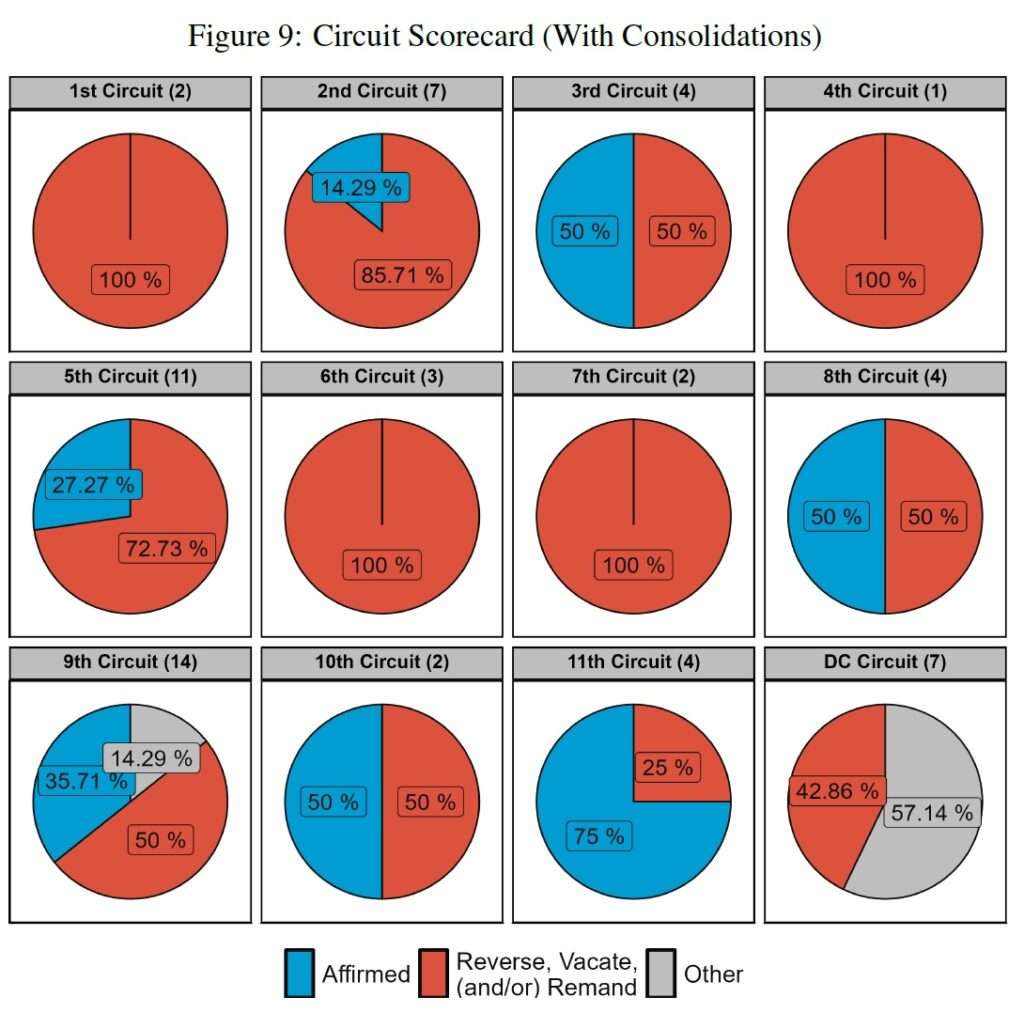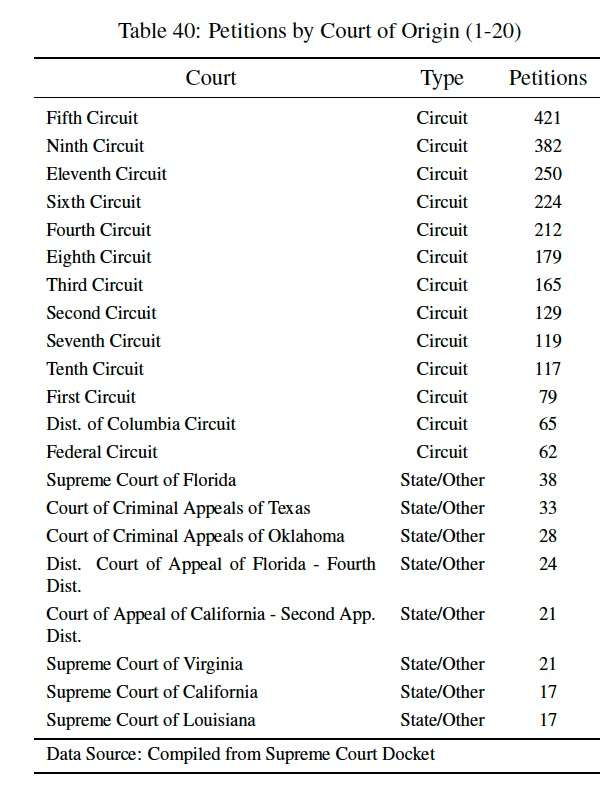The Volokh Conspiracy
Mostly law professors | Sometimes contrarian | Often libertarian | Always independent
Which Circuit Had The Highest Reversal Rate?
It was not the Fifth Circuit.
Last term, SCOTUSBlog ceased to publish its reliable StatPack. I am pleased that Adam Feldman and Jake Truscott have published a Stat Review of OT 2023. You should read through the rich 68-page report in detail. Here, I'd like to tease out one datapoint.
Which Circuit had the highest reversal rate? Surely it must be the Fifth Circuit, right? No. It was the Second Circuit. The Second Circuit's reversal rate was 85.71%. And for those keeping track at home, all but one were unanimous, 9-0 reversals: Murray v. UBS, Macquarie, Bissonette, Cantero, and NRA v. Vullo.
For the Fifth Circuit, if we include consolidated cases (such as AHM, and NetChoice), the reversal rate was 72.73%. The most prominent unanimous reversal was in AHM. Another unanimous reversal came in Devillier, though that holding was on completely different grounds than the Fifth Circuit ruled, and in some regards, was actually a victory for Texas. (No, I won't get into that mess again.) NetChoice was sort-of-unanimous, but it was a very strange reversal. For what it's worth, the Eleventh Circuit was also reversed (It seems the SEC East has a much higher affirmance rate than the SEC West.) The other reversals of the Fifth Circuit split 8-1 (Rahimi and Trevino), 7-2 (CFPB), and 6-3 (Murthy).
By my rough count, it seems the Second Circuit may have had a worse term this year than the Fifth Circuit. But that doesn't fit the narrative.
Another interesting data point. There were 421 cert petitions from the Fifth Circuit. (At least 420 of those were from the Solicitor General's Office–I'm kidding, I'm kidding). The Ninth Circuit, which is far larger, had only 382 cert petitions. And the Second Circuit, which had a higher reversal rate, yielded only 129 cert petitions.
I realize it is en vogue to dump on the Fifth Circuit, and fault lawyers in that circuit for shoddy advocacy. I was quoted today in one such piece about the reversal rate by the Texas Tribune, titled "Again and again, U.S. Supreme Court slaps down 5th Circuit." But I think that criticism misses the mark. I told the Trib:
Josh Blackman, a professor at South Texas College of Law, said these rulings reflect the simple fact that the 5th Circuit is to the right of the Supreme Court.
"Every judge takes an oath to the Constitution, and I think the judges in the 5th Circuit, and really all the courts, have very strong views on what the Constitution means," Blackman said. "The Supreme Court disagrees on that. That's their call."
…
This repeated repudiation from the Supreme Court is unlikely to impact how the 5th Circuit rules going forward.
"The judges of the 5th Circuit don't work for the Supreme Court anymore than I work for you," Blackman said. "It's a myth that the 5th Circuit will say, 'Oh man, I got reversed. Maybe I should rule differently next time.'"
The job of an appellate judge is not to try to guess what opinions would be upheld by the Supreme Court, Blackman said.
The bigger problem is when the Court shifts doctrine on the fly. It makes it much harder for lower-court judges to do their jobs. I think this is especially true in Rahimi (Second Amendment and facial challenges) and Murthy (standing), two of the higher-profile reversals.
Update: An IP Professor reminded me that in fact the Circuit Court with the highest reversal rate was the Federal Circuit–it went 0-2.
To get the Volokh Conspiracy Daily e-mail, please sign up here.




Show Comments (18)